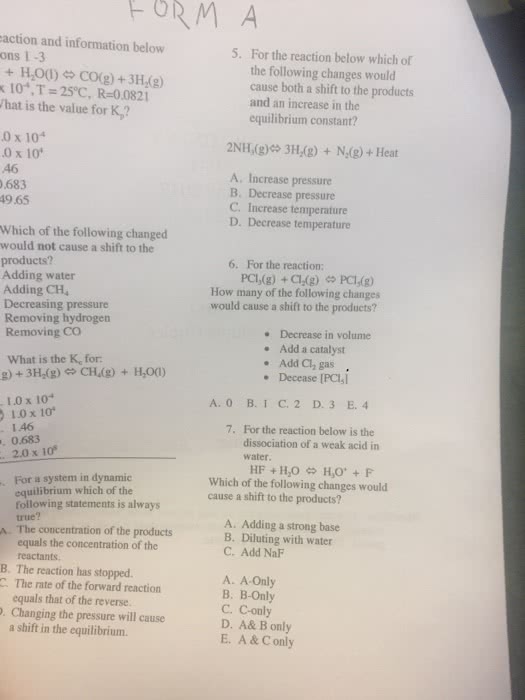CHEM 1R03 Lecture Notes - Lecture 26: Equilibrium Constant, Electronegativity, Solubility Equilibrium

Lecture Twenty-Six
Le Chatelier’s Principle (Continued)
•Effect of concentration: adding a reactant will decrease the amounts of the other
reactants and increase the amount of the products and form a new position of
equilibrium
•The position will shift towards the products
•Removing a reactant will increase the amounts of the other reactants and decrease
the amounts of the products —> position shifts towards the reactants
•Remember: removing a product can allow us to drive a reaction to completion
•Effect of pressure: changing the pressure of one gas is like changing its
concentration
•The same effect occurs as changing the concentration on the position of
equilibrium
•Increasing the pressure on the system causes the position of equilibrium to shift
towards the side of the reaction with the fewer gas molecules

•Effect of volume: decreasing the volume of the system increases its pressure
•The pressure is reduced by the reduction of gas molecules
•For volume, the opposite effect happens if the system pressure is decreased
•Effect of temperature: the equilibrium constant will change if the temperature
changes
•For exothermic reactions (energy released), heating the system will decrease K
•In this situation, think of heat as a product of the reaction therefore, the position of
equilibrium shifts toward the reactant side
•For endothermic reactions (energy absorbed), heating the system will increase K
•For this, you must think of heat as a reactant so the position of equilibrium will shift
towards the products
•Cooling an exothermic or endothermic reaction will have the opposite effects on K
•Solubility products: even insoluble salts dissolve somewhat in water (insoluble =
less than 0.1 gram per 100 grams of water)
•The solubility of insoluble salts is described in terms of equilibrium between the
undissolved solid and aqueous ions is expressed as: AnXm (s) <—> n A+ (aq) + m Y
— (aq)
•The equilibrium constant is the solubility product


